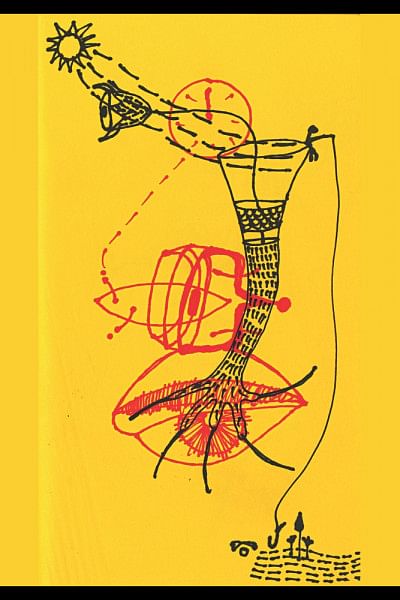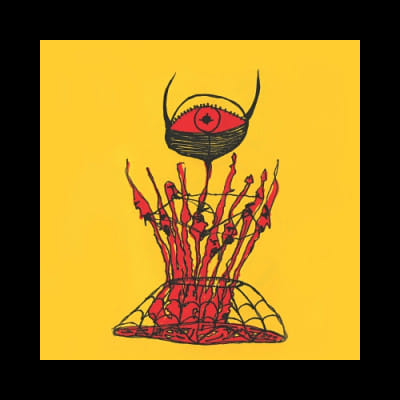The one thing missing from the conversation

What Priya Saha cited to Donald Trump is a statistical fallacy, and downright irresponsible, but what is way more problematic was our reaction to it.
In the course of a week, she has quickly become not just the talk of the town, but also the target of the general populace's hatred. In a video interview uploaded on YouTube by her NGO, the woman claimed there are people protesting in front of her house, threatening to break down the gates, and how she fears for the physical safety of her family. In the digital sphere, her name has been dragged through the mud, a family photo of her husband and her two daughters have been spread widely for the purpose of ridicule. There are social media posts demanding the woman (and her husband) be hanged to death, she has been called sexually derogatory terms, has been threatened online with violent rape, and has been categorically called the nation's oldest and most popular slur for Hindus.
Lawyers attempted to file sedition cases against Saha—cases where the highest punishment is life imprisonment. Over the course of the week, the charges were dropped, but only after the country's premier sent out an order forbidding hasty legal actions.
Her plea for help to Donald Trump was ridiculous, seeing that the state of minority rights has worsened during his tenure as president of the US. Her statistics are grossly inflated—both Hindu-Buddhist-Christian Oikkya Parishad and Dr Abul Barkat, one of the prime researchers on Hindu out-migration in the country, said so, last week. But no matter what untruths she said, our outrage is simply working to prove her point.
It feels like the obvious has to be stated here--discrimination against a certain group does not mean blood needs to be shed, or that homes need to be vandalised. Discrimination can be systemic, perpetuated by our societies and institutions (like social media platforms). It can be as simple as treating a person or an event differently, based on their identity.
The lengths to which the public reaction to Saha's comments went, seems to stem from her identity as a minority perpetrator, and the aggrieved population's identity as the majority. Such outrage was not in fate for the fives temples vandalised this year. Two temples each were desecrated in Madaripur and Faridpur between April 21 and 25, but the fifth one, to my surprise, was in Dhaka.
Last February 28, Mirpur Central Mandir was desecrated—a man forced his way into the temple and destroyed Kali's idol. A social experiment could be to go around asking people in Dhaka whether or not they have heard about this incident. I know I hadn't even though I'm in the profession of news reporting—and unless one reads newspapers cover to cover or religiously follows television news, one wouldn't either.
Very ironically, the way I got to know about the temple being vandalised is from a press release going viral right now, for a very particular reason. Around the same time as when the temple was vandalised, Priya Saha's paternal home went up in flames in what the community claims was an act of hate-crime. So, Hindu-Buddhist-Christian Oikkya Parishad issued a statement protesting both the temple being vandalised, and Saha's home being destroyed. That statement is now being circulated at this point in time, because the population has an active interest in Saha's life—what her past is, and what were her motivations behind going to Trump. It was while reading that press statement that I realised a temple had been vandalised this year, in my own city, months ago, and I had no clue. It really goes to prove that public interest shapes social media algorithms, and vice versa—and the whole system is inherently rigged regarding who and what it chooses to be more outraged about.
There are those who are wondering why a Hindu woman was sent at all, because the group had individuals like Nobel Prize winner and Yazidi activist Nadia Murad who has survived unspeakable violence at the hands of ISIS. True, our communities are not drawing blood and sparring with each other; but that has never been the been the point of contention. There were not many sympathisers of the arson attack on Hindu homes at Thakurgaon last year or the massive attack of Hindu neighbourhoods at Nasirnagar in 2016. Both the state and civil society strongly condemned the assaults, and the scale of violence at Nasirnagar especially shocked many. What is being discussed here however, are the everyday forms of micro-violence and discrimination that affect our minorities.

Consider the free, unreprimanded use of ethnic slurs, and stereotypes in the daily lives of minorities. This can be seen in the case of renting houses for example. Last year Star Weekend interviewed people from our religious minorities about whether they are turned away by landlords because of their religion, and they mostly replied in the affirmative.
"The landlord said that her husband is extremely religious and had just returned from performing Umrah. He would not want to rent their apartment out to Hindus," one female interviewee told Star Weekend. The reporter then called up real estate agents, and they confirmed that landlords have preferences regarding the religions of their tenants.
Where communities live, has historically been divided by religious fault-lines. Dhaka itself has neighbourhoods predominantly inhabited by Hindus for centuries. Outside of Dhaka, in the villages too, the same can be observed. Choosing a place of residence based on religion was a common practice in pre-partition neighbourhoods across the subcontinent. But 70 years after partition, landlords asking non-Muslim tenants to go live with other non-Muslims, is downright discriminatory. Perpetuating ghettos is no longer acceptable in a free market system where every customer is equal.
The reactionary stance taken by the general populace also fails to constructively critique Saha's claims regarding Hindu outmigration. Her numbers are off the charts, but it is also true that out-migration by minorities is a big reality.
Census statistics between 1971 to 2013 show the proportion of Hindus in the population declined from 13.5 percent (in 1974) to 8.5 percent (in 2011). The total Hindu population has been steadily decreasing by approximately one percentage point for every population census. A researcher from the government's Health Systems and Population Studies Division and the University of North Carolina (Chapel Hill) studied population data of 1989–2016 from the Matlab Health and Demographic Surveillance System to find out why Hindus have lower population growth than Muslims. This database was established by ICDDR,B in Matlab upazila of Chandpur, to track the health data of residents in the area, and covers data from a period of 50 years, making it a holistic goldmine for studying demographics. This is what the researcher found: 23 percent of the low growth may be related to international out-migration by Hindus. They also found that out-migration has been declining over time.
Besides, calling a population "missing" or unaccounted for, based on just census data would be a fallacy. Even if out-migration was not a defining factor, for the Hindu-Muslim ratio to remain constant over the years, they would have had to have equal population growth; meaning, beyond just having the same birth and date rates, they would have to be demographically similar.
Researchers have long documented how the Vested Property Act was used as a means to deprive Hindu families of their lands in post-independence Bangladesh, pinning that as the major reason for out-migration. Dr Abul Barkat, in his book "Deprivation of Hindu Minority in Bangladesh: Living with Vested Property" found that the community had lost 2.6 million acres of land. In addition, another popular line of inquiry into Hindu out-migration focuses on politically-motivated communal violence, election-time violence.
But social research into the phenomenon out-migration often ends there. There is little, if any, discourse on how everyday forms of discrimination, or micro-violence, can shape a Hindu person's idea of what kind of nation that person wants to be a part of. Saha's reactionaries may want to be a part of a nation-state that is primarily Muslim with token model minority citizens—a concept that wholly clashes with the idea with which Bangladesh was formed. Do the people want the same?

 For all latest news, follow The Daily Star's Google News channel.
For all latest news, follow The Daily Star's Google News channel. 



Comments